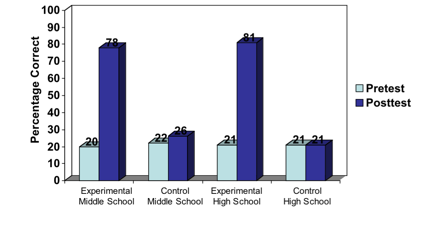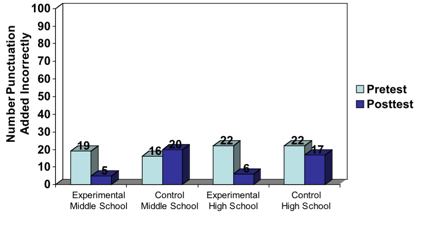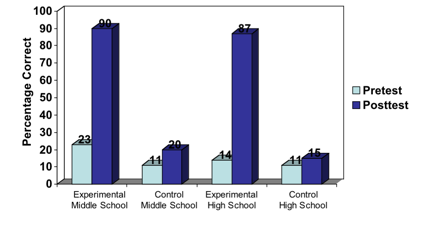Additional information
| Publisher | Edge Enterprises, Inc. |
|---|---|
| Year Printed | 2011 |
| Includes | Available now on a flashdrive for $36.00 |
$36.00
| Publisher | Edge Enterprises, Inc. |
|---|---|
| Year Printed | 2011 |
| Includes | Available now on a flashdrive for $36.00 |
Overview
The Punctuation Strategies CD is a computerized program for teaching students to apply most of the punctuation rules. Commas rules are not covered in this program. (They are covered in the Commas Strategies CD.) This study was conducted with students with learning disabilities, including 52 middle-school students and 36 high-school students. A pretest-posttest control-group design was employed, with students randomly assigned to the experimental or control group. Students worked through the interactive computerized program independently. They took quizzes at various points during the program, which were scored by the teacher. They had to reach the mastery criterion in order to be allowed to progress to the next lesson or next portion of a lesson within the program.
Results
Two tests were used. In one, students were required to insert punctuation marks into sentences where punctuation marks had been omitted. In the other test, students were required to demonstrate the use of the punctuation rules in their own writing. On the pretest where students had to insert punctuation marks, the whole group of experimental students correctly inserted 20% of the punctuation marks, and the whole group of control students correctly inserted 22% of the punctuation marks. On the posttest, the whole group of experimental students correctly inserted 79% of the punctuation marks and the whole group of control students correctly inserted 24% of the punctuation marks. The experimental students’ results compared favorably to the results of same-age comparison students without disabilities who inserted 28% of the punctuation marks correctly without instruction.
The results of an Analysis of Covariance using the pretest scores as the covariate indicated that there was a significant difference between the posttest scores of the two groups [F(1, 83) = 341.7, p < .0005], in favor of the experimental group. The effect size between the groups (partial eta squared) was .805, representing a very large effect size. No differences were found between the middle-school and high-school students’ results. (See Figure 1 for the middle-school and high-school students’ results.)
Figure 1: Correcting Punctuation Errors

With regard to the number of punctuation marks the students inserted incorrectly, the whole group of experimental students inserted a mean of 20 marks on the pretest and 5 on the posttest. The whole group of control students inserted a mean of 19 marks incorrectly on the pretest and 19 marks on the posttest. An ANCOVA revealed a significant difference between the two groups’ posttest scores [F(1, 83) = 64.0, p < .0005], in favor of the experimental group. The effect size between the groups (partial eta squared) was .435, representing a very large effect size. No differences were found between the middle-school and high- school students’ results. (See Figure 2 for the results for middle-school and high-school students.)
Figure 2: Number of Punctuation Marks Added Incorrectly

On a test of student use of the strategies where students demonstrated their use of punctuation marks in their own writing, the whole group of experimental students earned an average of 19% of the points available on the pretest and 89% of the points on the posttest. The whole group of control students earned an average of 11% and 19% of the points on the pretest and posttest, respectively. An ANCOVA revealed a significant difference between the groups’ posttest scores [F[1, 83] = 679.3, p < .0005], in favor of the experimental group. The effect size (partial eta squared) was .891, representing a large effect size. No differences were found between the middle-school and high-school students’ scores on this measure. (See Figure 3 for the results for the middle-school and high-school students.)
Figure 3: Percentage of Points Earned when Writing Sentences to Demonstrate Punctuation Use

Conclusions
The Punctuation Strategies CD program is an effective means of teaching punctuation strategies to students. All students reached mastery on all the lessons in the program. Experimental students’ use of the strategies increased from pretest to posttest, and their posttest scores far exceeded the scores of a same-age comparison group of students without LD. Experimental students’ posttest scores were significantly different from the posttest scores of the control students after the pretest scores were used as a covariate. Effect sizes were very large across the measures. Since no differences were found between middle-school and high-school students’ scores, the program appears to be equally effective for students at both school levels.
Reference
Schumaker, J. B., & Walsh, L. (2009). Effects of a hypermedia program on the punctuation and capitalization skills of students with learning disabilities. Phase II Final report for SBIR Grant #5 R44 HD043618-03.

Jean B. Schumaker, Ph.D.
Affliations
My Background and Interests
I grew up with a concern for children who need special help. One of my earliest experiences was organizing birthday parties for children with disabilities at the Matheny Medical and Educational Center in New Jersey. After the birthday parties were over and all the decorations had been cleaned up, I spent additional time with those children, putting them to bed, reading to and talking with them, and singing to them. Through those experiences and others as a camp counselor, I found that I loved being with children and teaching them. Eventually, I decided that I wanted to be a clinical psychologist, and I went to college and graduate school with that goal in mind. However, along the way, I got hooked on doing research! In particular, I got hooked on research related to ensuring that children learn. I’ve worked with children in schools, group homes, hospitals, and clinical settings. Across all those experiences, I’ve learned that all children can learn. I’ve learned that, if we hold high expectations for them and use special teaching methods, they usually meet those expectations. I continue to do research with the goal of helping teachers teach and students learn.
The Story Behind the Punctuation Strategies Software Program
I started developing instructional programs for writing skills in the 1970s when I was a graduate student at the University of Kansas. My graduate program required me to take part in an internship at the probation department of the Douglas County Juvenile Court in Kansas. I was assigned several cases of truant secondary students. In working with these students, I learned that they could not write. They told me that one of the reasons they avoided school was that they were embarrassed because they could not complete the work assigned to them. I also learned that there were no instructional programs available to teach them writing in an intensive way. I embarked on a journey of developing writing programs that continues to this day. Over the years, my colleagues and I have developed and tested programs for teaching students to write sentences, paragraphs, and themes, and to check their work for errors.
Nevertheless, even though these programs are very successful in teaching students the skills targeted for these programs, I realized that students still did not use many of the complex rules associated with the mechanics of writing, and that they were being required to apply those rules on state writing competency exams and college entrance exams. We began to work on the development of programs to teach students sophisticated rules associated with the mechanics of writing such as punctuation use. We also wondered whether we could teach students to apply these rules by teaching them cognitive strategies through the use of a computer program.
My Thoughts about Strategic Instruction
Strategic instruction is one of the few instructional methods that have been shown to be effective through empirical research to produce student improvement in learning and in academic performance for at-risk students. The study conducted on the Punctuation Strategies Program showed that a variety of students, including junior-high and senior-high students, students with disabilities, and students representing a variety of minority populations could learn to apply complex comma rules to edit someone else’s written work and within their own writing. Moreover, their performance exceeded the performance of normally achieving peers on punctuation tasks.
Teacher and Student Feedback on the Punctuation Strategies Program
Teachers and students have been very positive about this program. Teachers report that students not only learn to write by using the program, but that their reading skills improve as well. They report that navigating through the program is very intuitive and that students immediately are able to work through it with a minimum of instruction. Teachers have used the program in a variety of settings including general education English classes, resource rooms, and after-school programs.
My Contact Information
Please contact me through Edge Enterprises, Inc.
(jschumaker@edgeenterprisesinc.com or 877-767-1487).

 Quality Assignment Routine
Quality Assignment Routine